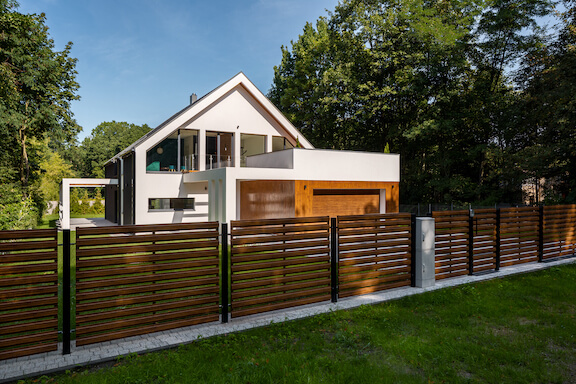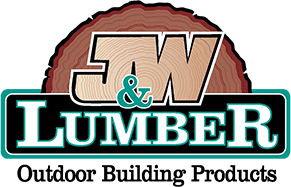
Horizontal fencing has been an outdoor home decor staple for decades, rising in popularity 30-40 years ago. Though recently, it has begun making a resurgence in fencing needs as the preferred layout for many. In the past, this style of fencing was favored for its strength and longevity. It was a go-to structure for encompassing people’s property and keeping it secure. Though these are still key elements, homeowners today also appreciate the sleek, modern look it creates.
As with any design trend, the old becomes new again and reinterpreted in ways to make it feel fresh. Horizontal fencing offers many benefits both structurally and aesthetically and can be customized to fit any home. Here are a few factors causing it to make a comeback.
Availability of Different Wood Species
There is a range of hardwoods and softwoods to choose from to create a variety of looks, each which can be personalized to complement individual home aesthetics. Western Red Cedar or Redwood are the most popular softwood lumber selections due to the natural beauty they possess. Additionally, both are sustainable, versatile woods that are durable and easy to work with. Ipe, Mangaris Red, Garapa, and Borneo Mahogany offer superior hardwood options that elevate the fence design.
However, regardless of the type of wood species that is used, it’s important to stain fencing to help with preservation. J&W Lumber carries several of the best exterior wood stains, including Penofin Ultra Premium Red Label or Messmer’s U.V. for softwoods. Meanwhile, Penofin Architectural Grade finish is the go-to choice for hardwood horizontal fencing. These quality stains offers several transparent wood stain tones and extra protection against mildew, moisture, and fading from the sun. Therefore, the distinctive features of the wood can shine through and remain intact for longer.
Create Appearance of a Larger Space
Another advantage of horizontal fencing is it can make the yard appear bigger. The line of sight takes the eye from end-to-end versus straight down to the ground as with vertical fencing. The clean lines serve as a solid base for any landscaping project and/or when creating your ideal backyard oasis. Smaller spaces seem more expansive, adding to the overall appeal.
Keep in mind though, with horizontal fencing, fence posts are typically closer together than with vertical posts to prevent bowing. Exact measurements are based on city requirements so differ depending on your specific area. Prior to any installation, it’s best to check with the minimum requirements necessary to start construction.
Customizable, Modern Looks
By using multiple board dimensions, there are a variety of patterns to further customize horizontal fencing. Rather than stick to the same lumber size, many opt to alternate 1x2s with 1x4s or 1x8s for a contemporary look. Meanwhile, changing the spacing between boards also allows for design creativity.
Current trends also include vibrant fencing colors offset with solid black posts, varying levels of fencing (from high to low or low to high), and accessories like garden boxes or gates to complete the effect. Whether you want to create a rustic vibe, a minimalistic appeal, or a colorful outdoor space, the options are nearly endless with horizontal fencing at the base.
To create an eye-catching appeal for outdoor projects, horizontal fencing has reemerged as the preferred home design style. We have the lumber and wood stains you need in stock to get started, and our specialists are here to help. Stop by your local J&W Lumber store today.
